- Home
- Natural Bait
The Best Fishing Baits are Natural Baits - Or Are They?
Well, maybe. But there's no doubt that natural fishing baits must be fresh to be effective - and the best way of ensuring their freshness is to collect them yourself.
Marine worms' and some shellfishes' preference for making sand and mud their habitat - normally a long way from where I've parked the car - can make their extraction rather more work than I like to be involved in. But needs must.
The best implement for their extraction is a garden fork, ideally one
with straight flat tines. Some professional bait diggers - yes, people
make a living out of digging fishing baits - grind down the backs of the
tines to a tapered point, which helps them penetrate sand or mud with
less effort.
Often the best places to dig for these saltwater fishing baits are those that are only exposed at low water - a twice daily occurrence on most UK shorelines.
A set of tide tables will tell you the times at which low and high water occur at various locations around the coast, together with their heights relative to a given datum.
Tide Tables will also give you the dates and times of Spring Tides, which is when the tideline recedes to its furthest point - a prime opportunity for collecting saltwater fishing baits such as lugworm and ragworm.
But there is an easier way ...
Artificial Fishing Baits
Up until fairly recently any mention of fishing baits referred to natural fishing baits. Today's technology has brought us artificial bait. It can be at least as effective as natural bait and in some instances beats it hands down, as my very first try with artificial bait demonstrated.
But, back to natural fishing baits...
Natural Fishing Baits
Lugworms
These marine worms dig down into the sand by sucking it in at one end and excreting it at the other, having extracted all the good bits during the passage through. The result of this process is a worm cast left on the surface. If you see a number of these grouped together, you know it's a good place to start digging.
But if all else fails you can buy these fishing baits from your local
tackle shop, either by weight or number. Traditionally they'll be
handed over in folded newspaper, and if you don't want to use them all
at once they'll keep for a day or two in the refrigerator. The women in
our lives often have something to say about this though ...
Take care when threading them on the hook, as you don't want to over-squeeze them and lose all that lovely fish-attracting juice. Start the baiting-up process by inserting the point of a fine-wire hook in at the thick end and threading the worm around the bend of the hook and just over the eye so that the knot (a uni-knot is best) is contained within the worm.
Then thread on another inch (25mm) or so of worm and bring the hook point out. The barb will stop it falling off.
For better bait security and improved hook-ups, think about using the two-hook pennel rig for long baits like these.
Ragworm
Ragworm tend to hang out in stonier ground than ragworm, where the bait pimp is not at its best, so it's back to the fork for ragworm. There are three kinds resident in the UK - King Ragworm, the prized White Ragworm and Harbour Ragworm.
All three models come armed with set of pincers at the head. They keep them hidden until a nipping opportunity arises, and when it does it's a mildly unpleasant surprise - more so from the King Ragworm.
In all other regards, treat them as you would a lugworm.
There's probably not a fish in the sea that won't wrap his gums happily around a ragworm, and this along with hard work associated with collecting them means these fishing baits are not cheap to buy.
Shellfish
And while you're forking about for lug and rag, you may well come across cockles and razorfish - two shellfish of the bivalve variety. Cockles live a few inches down in the sand and are easily gathered, but sadly they're not much of a fishing bait. Razorfish on the other hand, are.
Collecting razorfish requires stealth, or if that fails, subterfuge. If you see the end of a razorfish shell sticking up out of the sand, creep up on it and grab it. Apply steady pressure and it will gradually release its grip. If you've been outwitted by the sparkling intellect of the razorfish, all is not necessarily lost. Just pour some saltwater down its burrow, and stand very still.
If you're lucky the razorfish will think the tide's come in and pop up for a look-see, whereupon you grab it. If this fails, pick up that fork and start digging furiously.
Mussel, another bivalve mollusc, is a good fishing bait and can be collected from groyne posts and rocks. They're a delicate bait and have a tendency to come off the hook easily, which is where the much tougher cockle comes in. Put the mussel on the hook first, followed by the cockle - the famed mussel-cockle cocktail - which will hold the mussel in place without masking the hook.
Other shellfish worth a try on the hook include clams and slipper limpets, but they wouldn't be my first choice if mussel or razorfish were available.
Shrimp
OK I'll admit it. There are few things in life that give me greater pleasure than scratching around in rock pools and along the shoreline with a shrimp net. Those that do I'm keeping to myself.
And it'll not be just shrimps that turn up in the net. There'll be blennies, butterfish and other small fish, juvenile and highly indignant shore crabs, maybe a sandeel or two - a whole treasure trove of fishing baits.
And then there's crabs...
Peeler Crab
Not just any old crab, but one which is about to shed its shell to enable a new larger one to grow underneath. At this stage of their development they're known as peelers (or sometimes soft-backs) and are completely soft internally. Fish love them, and will queue up for a chance to pounce upon your peeler crab baited hook.
At the peeler stage they're at their most vulnerable and hide away defenseless amongst rocks and seaweed. If you poke around in such places at low tide you'll find them. Be wary of imposters just pretending to be peelers - these will have claws in full working order, and won't be slow in using them.
Peeler crabs make fine bass fishing baits, but probably the bass bait par excellence is...
Sandeel
These, together with their slightly larger brothers 'launce', aren't eels at all - they're small, elongated fish that hide from their predators by wriggling into the sand.
Fished live and freelined on light tackle from a drifting boat they're second to none when it comes to catching bass, but getting a supply of live ones isn't easy. Fortunately they freeze well, and are available in this form from most saltwater fishing tackle shops.
Mackerel
Mackerel are easy to catch as described elsewhere in this website, and are one of the most popular summer fishing baits of UK based boat anglers. But they must be fresh, as in 'just caught'. Unlike sandeel they don't freeze well and quickly degenerate into a soggy mush and lose all of their appeal when thawed out.
Small ones - joeys - can be fished live for bass. Whole fillets or fish strips are great for larger fish including conger, ling and turbot - and small silvery slivers will catch bream along with pretty much anything else that swims around our shores. And full size ones fished whole are the way to go for shark.
Squid
The best place to collect these is from the frozen food counter of your local supermarket. They come in boxes of around 20 or so and average around 6" long including tentacles. As always, freshness is vital. Stale squid is betrayed by a pink-tinged flesh - it should be white - and a smell that's hard to ignore. And if you leave squid lying around in the sun for long they'll quickly go off, so keep them in a cool box if at all possible.
Before baiting up it's worth peeling off the skin from the mantle to reveal the more visible white flesh beneath. To do this, just pull of the two small fins near the top of the mantle and much of the skin will follow.
Squid can be used whole for larger fish like conger, cod and ling. Most anglers prefer to mount a whole squid using a two-hook Pennel Rig. Alternatively, strips can be cut from the mantle and mounted on a single hook.
Recent Articles
-
Sea Fishing Rods and Reels Must Be Compatible for a Balanced Outfit
Mar 08, 21 08:30 AM
A quality reel fitted to a quality rod doesn't necessarily make it a quality outfit. Your fishing rods and reels have to be properly matched if you're to get the best out of them, and here’s how -
Essential Lure Fishing Tips That All Saltwater Anglers Should Know
Mar 08, 21 04:51 AM
Which single lure fishing tip applies to trolling, jigging, baitcasting, spinning, fly fishing and any other branch of lure fishing? Well, it is the one at the top of this list -
Vital Jig Fishing Tips That You Really Cannot Afford To Miss!
Mar 07, 21 10:20 AM
Essential jig fishing tips to help you select the right lure for successful jig fishing, together with the techniques required to get the most out of your jig fishing outfit
















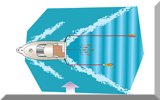

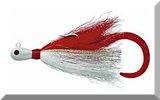
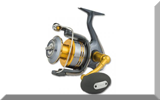
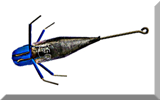
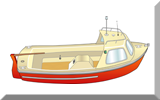
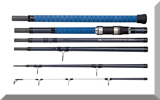
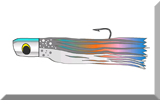
New! Comments
Have your say about what you've just read! Leave me a comment in the box below.